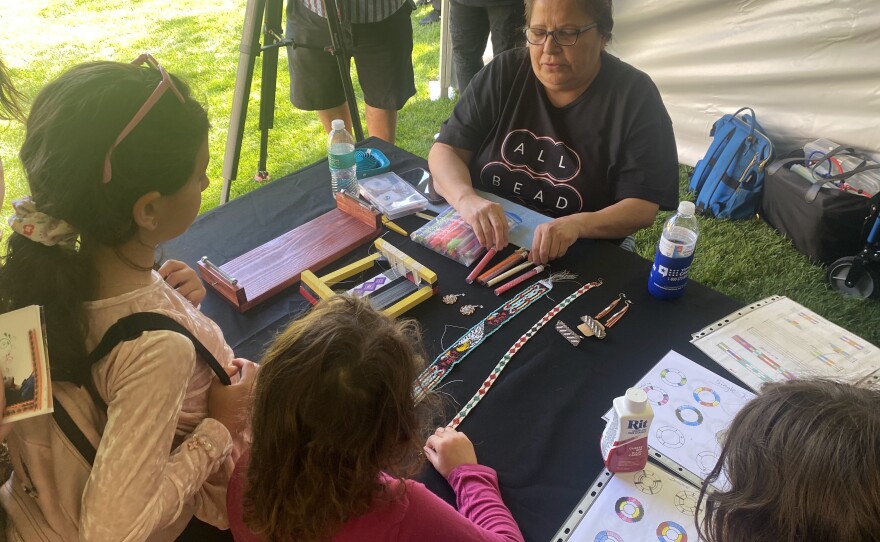The Marcus Performing Arts Center in downtown Milwaukee recently hosted an inaugural Native Heritage Celebration. It included performances, education and a makers’ market.
The event was inspired by the loss of a Milwaukee festival that celebrated Indigenous cultures. If you’ve been in the Milwaukee-area since at least the 1980s, you probably remember Milwaukee’s Indian Summer Festival.
For 32 years, the festival sought to preserve and celebrate Native American cultures, especially highlighting Wisconsin’s 11 federally recognized tribes. But the festival ended in 2019.
"And so, something like this is a kind of small way to remedy that and continue to be able to show who we are, what we have to offer, how amazing our community is," says Averie Anderson, a community and peer mentor in Milwaukee.
"And just that we bring tons of love, culture, lots of good medicine to our community," she says.

Anderson is an enrolled member of the Oneida Nation of Wisconsin, and she was also on the planning committee for the Native Heritage Celebration.
"We are here to celebrate our resilience, to make a statement that we are still here, we are not a historical figure. We are surviving and we are thriving," she says.
Anderson says more than 1,000 Milwaukee Public School students were invited to the event. But the festivities were also open to the public.
One of the main attractions was a “Living Village” set up under a large tent on the grounds outside of the Marcus Performing Arts Center.

Attendees could walk through and see community organizations and representatives from local tribes teaching about traditional Indigenous food, regalia and history.
James Flores, the tribal liaison at the Milwaukee Public Museum, was dressed in full regalia giving students some insight into parts of his outfit.
Flores explained to students some of the elements that form a traditional headdress he had on display.
“This is also called a ‘gustoweh,’ and it’s an Oneida wear,” he says. A student asks Flores if it is a hat, and Flores responds that the literal meaning is feathered cap. He goes on to explain how the cap is made.
"I got eagle feathers, these are porcupine quills, you take the quills off a porcupine, and you cut the tip off the pointy part — they're like straws — so you can flatten them, and then they wrap them up there and then they dye 'em," he says.
Representatives from the Urban Indigenous League had a table where students could spin a wheel and learn how to say a greeting in a language from one of Wisconsin’s tribes.

And beadwork artists from All Bead Up explained to students how they make some of their crafts.
"Part of the reason that we wanted to host this event is to share who we are — what our traditions are, what our culture is, what it looks like — in order to educate others, and combat the ignorance that comes out of history not being taught fully or accurately," Anderson says. "And so, you know, you give people some experiences of their own and they tend to learn from that. And hopefully that is going to continue to build some rapport and respect between the different communities in our city."
Anderson says she hopes attendees left the Native Heritage Celebration with a deeper understanding of Indigenous people, and their beliefs and practices.
The committee behind the Native Heritage Celebration plans for the event to be an annual affair.









